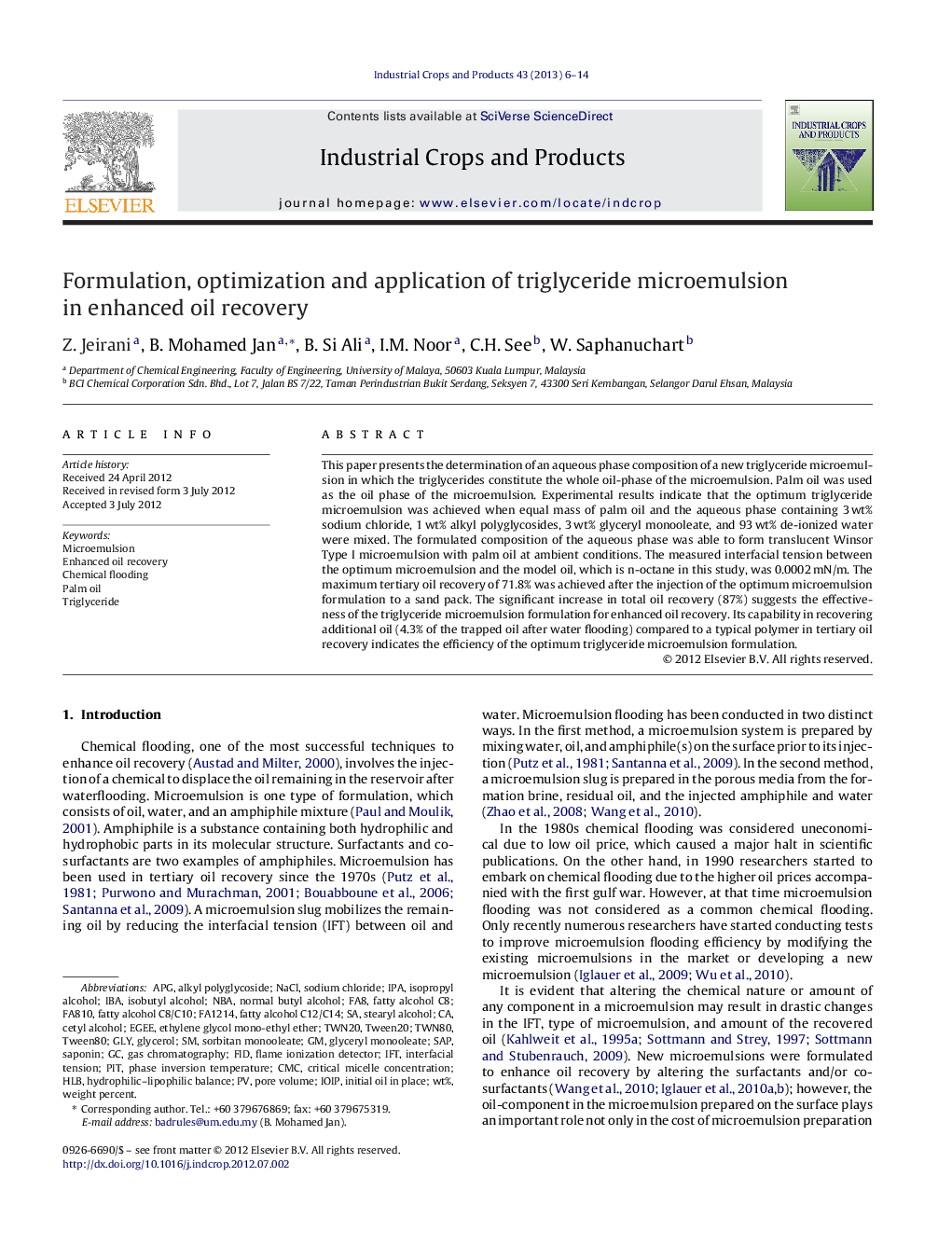| Article ID | Journal | Published Year | Pages | File Type |
|---|---|---|---|---|
| 4514088 | Industrial Crops and Products | 2013 | 9 Pages |
This paper presents the determination of an aqueous phase composition of a new triglyceride microemulsion in which the triglycerides constitute the whole oil-phase of the microemulsion. Palm oil was used as the oil phase of the microemulsion. Experimental results indicate that the optimum triglyceride microemulsion was achieved when equal mass of palm oil and the aqueous phase containing 3 wt% sodium chloride, 1 wt% alkyl polyglycosides, 3 wt% glyceryl monooleate, and 93 wt% de-ionized water were mixed. The formulated composition of the aqueous phase was able to form translucent Winsor Type I microemulsion with palm oil at ambient conditions. The measured interfacial tension between the optimum microemulsion and the model oil, which is n-octane in this study, was 0.0002 mN/m. The maximum tertiary oil recovery of 71.8% was achieved after the injection of the optimum microemulsion formulation to a sand pack. The significant increase in total oil recovery (87%) suggests the effectiveness of the triglyceride microemulsion formulation for enhanced oil recovery. Its capability in recovering additional oil (4.3% of the trapped oil after water flooding) compared to a typical polymer in tertiary oil recovery indicates the efficiency of the optimum triglyceride microemulsion formulation.
► Palm oil was used as the oil phase of a novel triglyceride microemulsion in EOR. ► After co-surfactant screening, the aqueous phase composition was optimized. ► Minimum IFT and maximum EOR were achieved for the optimum formulation. ► The formulated microemulsion is more effective than a typical polymer flooding.
